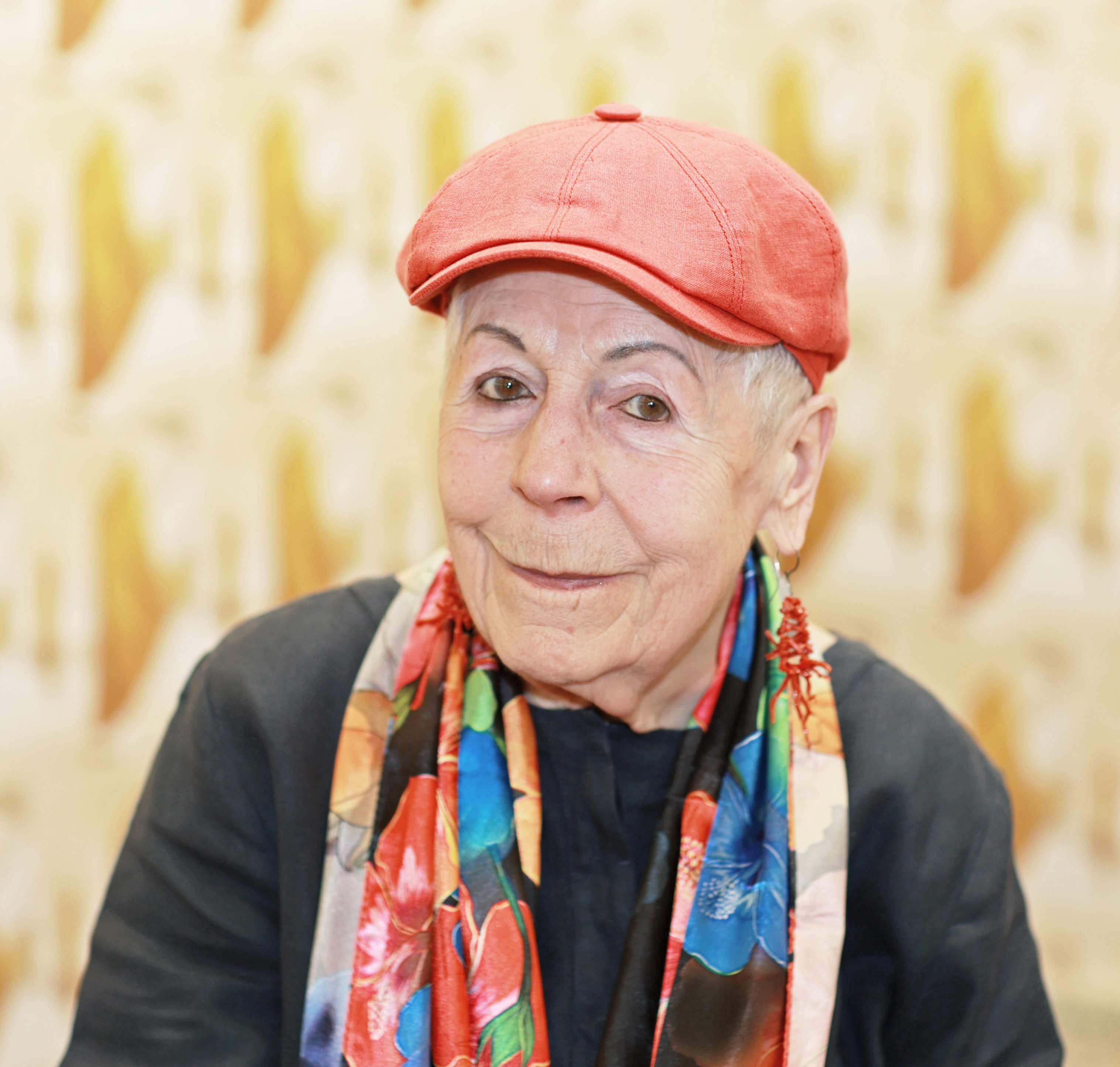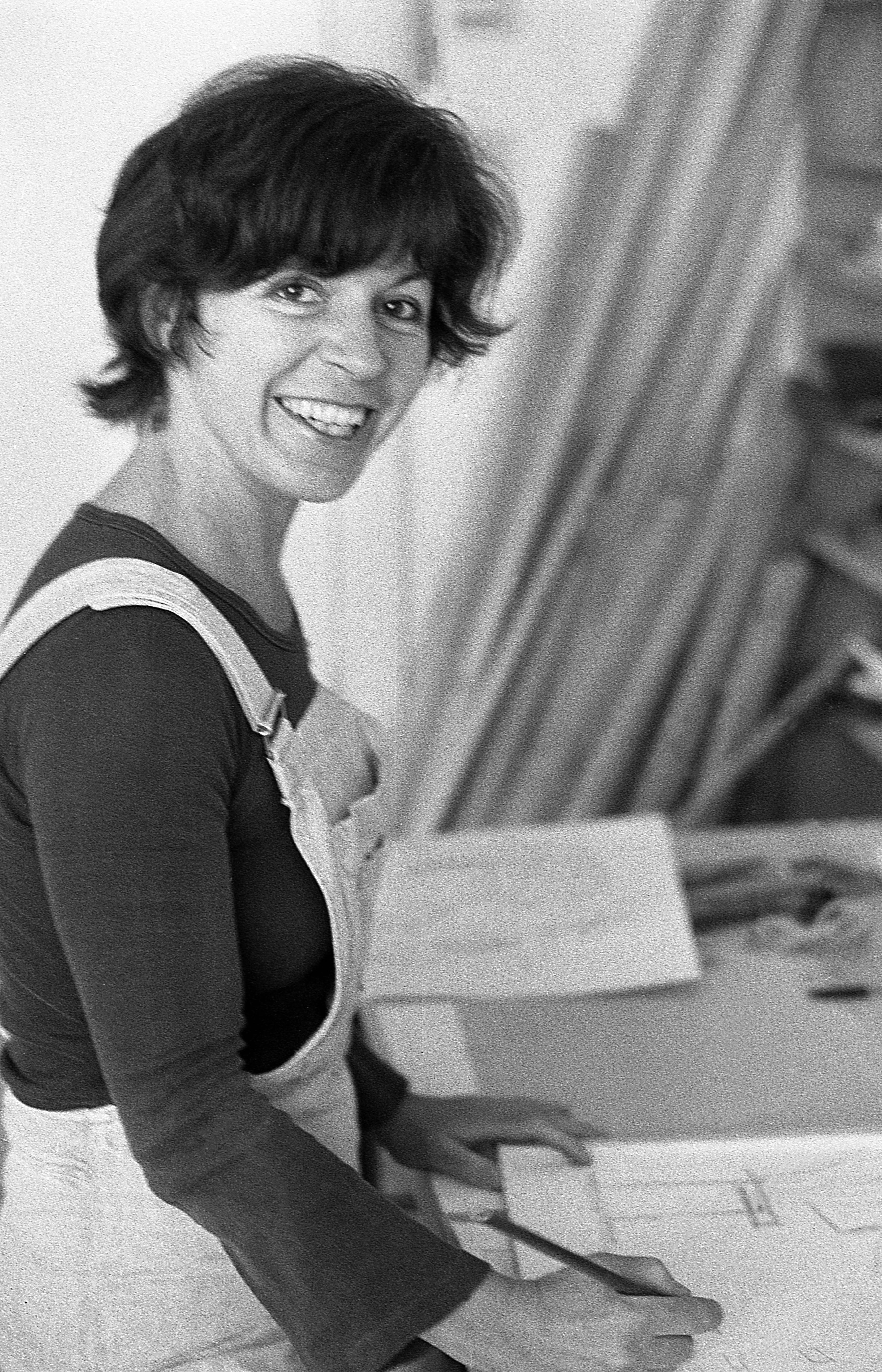Ursula Sax on:
[Wikipedia]
[Google]
[Amazon]
 Ursula Sax (born 1935 in Backnang/Württemberg) is a German visual artist and sculptor.
Ursula Sax (born 1935 in Backnang/Württemberg) is a German visual artist and sculptor.
 In 1960, she launched herself as a freelance artist in
In 1960, she launched herself as a freelance artist in
 Ursula Sax (born 1935 in Backnang/Württemberg) is a German visual artist and sculptor.
Ursula Sax (born 1935 in Backnang/Württemberg) is a German visual artist and sculptor.
Life
Ursula Sax was born inBacknang
Backnang (; ) is a town in Germany in the Bundesland (Germany), Bundesland of Baden-Württemberg, roughly northeast of Stuttgart. Its population has increased greatly over the past century, from 7,650 in 1900 to 37,957 in 2022.
Backnang was ce ...
, a lively small town near Stuttgart
Stuttgart (; ; Swabian German, Swabian: ; Alemannic German, Alemannic: ; Italian language, Italian: ; ) is the capital city, capital and List of cities in Baden-Württemberg by population, largest city of the States of Germany, German state of ...
. She has described her father as a teacher with artistic-poetic ambitions. He refused to go along with the political spirit of the age and in small-town Germany during the 1930s and 1940s his elder daughter acquired from her father the habit – which has never left her – of thinking herself an outsider. Still aged just 15, she enrolled at the State Academy of Fine Arts (''"Staatliche Akademie der Bildenden Künste"'') in Stuttgart
Stuttgart (; ; Swabian German, Swabian: ; Alemannic German, Alemannic: ; Italian language, Italian: ; ) is the capital city, capital and List of cities in Baden-Württemberg by population, largest city of the States of Germany, German state of ...
where she studied sculpture between 1950 and 1955, before moving to West Berlin
West Berlin ( or , ) was a political enclave which comprised the western part of Berlin from 1948 until 1990, during the Cold War. Although West Berlin lacked any sovereignty and was under military occupation until German reunification in 1 ...
where for the next five years she studied at the Berlin University of the Arts
The Universität der Künste Berlin (UdK; also known in English as the Berlin University of the Arts), situated in Berlin, Germany, is the second largest art school in Europe. It is a public art and design school, and one of the four research uni ...
as a "Meisterschülerin" (special higher-level student) of Hans Uhlmann. She later implied during an interview that her most influential teacher, while she was still at Stuttgart
Stuttgart (; ; Swabian German, Swabian: ; Alemannic German, Alemannic: ; Italian language, Italian: ; ) is the capital city, capital and List of cities in Baden-Württemberg by population, largest city of the States of Germany, German state of ...
, was Willi Baumeister
Willi Baumeister (22 January 1889 – 31 August 1955) was a German painter, scenic designer, art professor, and typographer. His work was part of the art competitions at the 1928 Summer Olympics and the 1932 Summer Olympics.
Life
Born in S ...
: "He has been in my head ever since".
 In 1960, she launched herself as a freelance artist in
In 1960, she launched herself as a freelance artist in Berlin
Berlin ( ; ) is the Capital of Germany, capital and largest city of Germany, by both area and List of cities in Germany by population, population. With 3.7 million inhabitants, it has the List of cities in the European Union by population withi ...
, constantly experimenting with new materials and forms. There was no instant breakthrough moment, and for some years her professional progress was steady rather than spectacular. Nevertheless, from 1960 she was able to win an annual travel bursary from the Berlin "Kultursenat" for Greece
Greece, officially the Hellenic Republic, is a country in Southeast Europe. Located on the southern tip of the Balkan peninsula, it shares land borders with Albania to the northwest, North Macedonia and Bulgaria to the north, and Turkey to th ...
and another sponsorship grant from the Arts Circle of the Federation of German Industries (''"Bundesverband der Deutschen Industrie"'').
During 1985/86 and again in 1989 Sax accepted a guest professorship at the Hochschule der Künste (Arts Academy) in West Berlin. She then, in 1990, accepted a full professorship at the Hochschule für Bildende Künst (Visual Arts Academy) in Braunschweig
Braunschweig () or Brunswick ( ; from Low German , local dialect: ) is a List of cities and towns in Germany, city in Lower Saxony, Germany, north of the Harz Mountains at the farthest navigable point of the river Oker, which connects it to the ...
, remaining there till 1993. From Braunschweig
Braunschweig () or Brunswick ( ; from Low German , local dialect: ) is a List of cities and towns in Germany, city in Lower Saxony, Germany, north of the Harz Mountains at the farthest navigable point of the river Oker, which connects it to the ...
she moved on to Dresden
Dresden (; ; Upper Saxon German, Upper Saxon: ''Dräsdn''; , ) is the capital city of the States of Germany, German state of Saxony and its second most populous city after Leipzig. It is the List of cities in Germany by population, 12th most p ...
where she was employed as a professor from 1993 till 2000 at the Academy of Fine Arts
The following is a list of notable art schools.
Accredited non-profit art and design colleges
* Adelaide Central School of Art
* Alberta College of Art and Design
* Art Academy of Cincinnati
* Art Center College of Design
* The Art Institute ...
which, prior to her arrival, according to one commentator, was a bastion of Soviet-style "organically contemplated figuration in sculpture and the plastic arts". In the wake of reunification
A political union is a type of political entity which is composed of, or created from, smaller politics or the process which achieves this. These smaller polities are usually called federated states and federal territories in a federal govern ...
, taste in art in the so-called "neue Bundesländer" (former) East Germany
East Germany, officially known as the German Democratic Republic (GDR), was a country in Central Europe from Foundation of East Germany, its formation on 7 October 1949 until German reunification, its reunification with West Germany (FRG) on ...
) was no longer a matter to be determined by party
A party is a gathering of people who have been invited by a Hospitality, host for the purposes of socializing, conversation, recreation, or as part of a festival or other commemoration or celebration of a special occasion. A party will oft ...
leaders and officials. Sax was instrumental in driving a complete reorientation of approach during her seven years at Dresden
Dresden (; ; Upper Saxon German, Upper Saxon: ''Dräsdn''; , ) is the capital city of the States of Germany, German state of Saxony and its second most populous city after Leipzig. It is the List of cities in Germany by population, 12th most p ...
.
On reaching 65 Sax retired from her academic post and returned to her life as a freelance artist, in 2004 settling in Radebeul
Radebeul (; ) is a town (''große Kreisstadt'') in the Elbe valley in the district of Meißen (district), Meißen in Saxony, Germany, a suburb of Dresden. It is well known for its viticulture, a Karl May Museum, museum dedicated to writer Karl ...
, a wine (and tourist) town in the hill country down-river
A river is a natural stream of fresh water that flows on land or inside Subterranean river, caves towards another body of water at a lower elevation, such as an ocean, lake, or another river. A river may run dry before reaching the end of ...
of Dresden, with a lively and long-standing tradition as a home to artists. During the next few years she held several solo exhibitions, both in Dresden and in Berlin. She relocated again at the start of 2013, this time back to Berlin
Berlin ( ; ) is the Capital of Germany, capital and largest city of Germany, by both area and List of cities in Germany by population, population. With 3.7 million inhabitants, it has the List of cities in the European Union by population withi ...
.
Works
The work of Ursula Sax is multi-faceted, but can be sorted into a succession of (often overlapping) time periods, each lasting several years, and each characterised by a certain – often unconventional – material or selection of materials. Her earliest serious works are in clay, principally retaining the organoid "raw" form of the material, combining the inherent nature of it with the artist's technical input. In an early phase, from 1954 till about 1962, there were many sculpted forms from tree trunks, each organised around an axis deriving from the form of the timber. From 1957 till 1960, along with timber, she was working extensively in iron. Through the 1970s she concentrated on sculptures and interior constructions using preformed timber elements such as boards and beams, with a frequent preference for simple soft pine timber. Between 1991 and 1996 Sax produced a succession of "wind sculptures" and flag, using fabrics in combination with colourful so-called "wind clothes" and "air clothes" to cloth female bodies for a "geometric ballet" presentation, evincing a shameless spirit of freedom to be true to oneself, of optimism and good cheer, in ways that two decades later, in a more sombre age, can be construed as almost indelicately cheerful or frivolous, although there is no reason to impute any sort of conscious political intent at the time to the artist. They were generally presented in public places where they readily drew the eye, or in theatres in the context of avant-garde stage shows. From the very start, Sax's artistic approach has been defined in part by an interest in sculptural aspects and related aspects of sculptural-spatial themes, along with express relationships to the relevant architectural spaces. Through the years she created a number of major sculptural pieces for public spaces. One of these is "Looping" beside the Berlin exhibition ground (''"Berlin Messegelände"''). Described by one commentator as "a 120 meter long yellow steel sculpture, winding round its own axis like a dancing dragon", its authorship is not as widely known as much as might be expected. This reflects an element of reticence on the part of its creator. Ursula Sax is much more interested in producing her art work than in sitting down with interviewers or supporting a personal public relations support network.Membership
Between 1966 and 1996 Ursula Sax was an active member of the Deutscher Künstlerbund (''"Association of German Artists"''). During those three decades she took part in no fewer than twelve of the association's annual exhibitions.Awards (selection)
Sister
The younger sister of Ursula Sax, Uta Sax, has achieved some notability as an actress, principally on TV.Notes
References
{{DEFAULTSORT:Sax, Ursula People from Backnang Artists from Berlin Academic staff of the Dresden Academy of Fine Arts Academic staff of the Braunschweig University of Art Academic staff of the Berlin University of the Arts 20th-century German women artists 21st-century German women artists German women sculptors 1935 births Living people